Guide H-511
Daniel Smeal and Bonnie Hopkins
College of Agricultural, Consumer and Environmental Sciences, New Mexico State University
Authors: Respectively, College Professor, Agricultural Science Center at Farmington; and Extension Agriculture Agent, San Juan County Extension Office, New Mexico State University. (Print friendly PDF)
Introduction
Turfgrass is grown to improve the environment of landscapes throughout New Mexico (NM) and the United States (US). Turfgrass provides recreational surfaces for outdoor sports and play. Along with trees and other plants, turfgrass creates functional and aesthetically pleasing environments in parks and landscapes. It provides cooling around homes, buildings, and paved lots. Turfgrass also shields soil from erosion by wind and rain (Beard and Green, 1994).
This report characterizes and suggests turfgrass choices for northern NM based on observations during two separate irrigation studies conducted at New Mexico State University’s Agricultural Science Center at Farmington (ASCF). The ASCF is located in San Juan County in the northwestern corner of NM at an elevation of 5,640 feet. Average annual precipitation is 8.1 inches and the average length of the freeze-free period is 162 d (May 4 to October 13). It is in USDA Plant Hardiness Zone 7a, having a 43-year average extreme minimum temperature of 0°F.
Turfgrass Selection Considerations For Northern NM
The grass family (Poaceae) is divided into two separate groups based on temperature preference. Cool-season grasses (e.g., Kentucky bluegrass, fescue, ryegrass) prefer summer daytime temperatures from 60 to 75°F and grow best in the northern US. Warm-season grasses (e.g., bermudagrass, buffalograss) prefer summer daytime temperatures between 80 and 95°F (Beard, 1973) and grow best in the southern US. Northern NM lies in the “transition zone” (Figure 1), where high and low temperature extremes in summer and winter, respectively, may inhibit the optimal performance of grass species in either group. Elevation, in particular, plays a primary role in the group, species, and variety of turfgrass chosen for specific sites in northern NM. This is because of its effect on temperature and accumulation of heat units, which in turn affects turfgrass dormancy and winter survival. Other factors to consider in turfgrass selection include soil type, the intended use and desired quality of the turf, maintenance considerations, and water cost and availability (Fagerness and Keeley, 2000). A summary of observed characteristics of grasses included in the studies at ASCF is presented in Table 1. More details pertaining to the summary follow under the respective heading for each species.
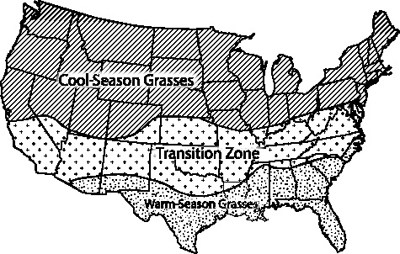
Figure 1. Map of U.S. showing turfgrass zones (adapted from Lawn Institute, 2015).
|
Table 1. Turfgrasses Included in the ASCF Irrigation Study with Relative Quality Ratings for Some Observed Characteristics at High Irrigation |
|||||
|
Cool-Season Grasses (green mid-March through mid-November) |
|||||
|
|
Characteristic and Quality Ratinga |
||||
|
Common Name (species) |
Variety |
Color |
Density |
Drought Recovery |
Required Irrigation |
|
Kentucky bluegrass (Poa pratensis) |
Adelphi |
4 |
4 |
4 |
8 |
|
Ascot, Bariris |
4.5 |
4 |
3 |
9 |
|
|
Baronie, Coventry, Goldrush |
5 |
4 |
3 |
9 |
|
|
Park |
3 |
4 |
4 |
9 |
|
|
Tall fescue (Festuca arundinacea) |
Shenandoah |
5 |
3.5 |
1 |
9 |
|
Hard fescue (Festuca ovina) |
SR-3100 |
5 |
4 |
1.5 |
9 |
|
Red fescue (Festuca rubra) |
Dawson |
4 |
4 |
1 |
9 |
|
Perennial ryegrass (Lolium perenne) |
Seville |
5 |
4 |
0.5 |
10 |
|
Streambank wheatgrass (Elymus lanceolatus) |
Sodar |
3 |
3.5 |
1.5 |
8 |
|
Crested wheatgrass (Agropyron desertorum) |
Roadcrest |
2 |
2.5 |
3 |
7 |
|
Prairie junegrass (Koeleria macrantha) |
Barkoel |
4 |
4 |
1 |
10 |
|
Alkaligrass (Puccinellia distans) |
Fults |
1 |
2 |
- |
- |
|
Warm-Season Grasses (green mid-May through mid-October) |
|||||
|
Common Name (species) |
Variety |
Color |
Density |
Drought Recovery |
Required Irrigation |
|
Bermudagrass (Cynodon dactylon) |
Riviera |
5 |
4 |
4 |
7 |
|
Guymon, Wrangler, Yukon |
4.5 |
4 |
4 |
7 |
|
|
NM Sahara |
|
winterkill |
|
- |
|
|
Buffalograss (Buchloe dactyloides) |
Lovington, Tatanka, Texoka |
3 |
3 |
4 |
6 |
|
Bison, Topgun |
4 |
3.5 |
4 |
7 |
|
|
Legacy |
|
poor stand |
|
|
|
|
Blue grama (Bouteloua gracilis) |
Alma |
3 |
3 |
4 |
7 |
|
Zoysia (Zoysia japonica) |
Zenith |
|
poor stand |
|
- |
|
aFor color, density, and drought recovery: 1 = poorest, 5 = best; for irrigation, the higher the number, the more irrigation was required to maintain acceptable quality (dark green color and uniform density). |
|||||
Cool-Season grasses
In the ASCF studies, cool-season grasses were planted in late August or early September. These grasses can also be planted in the spring, but in northern NM, the late summer to early fall planting may be preferable because of lower wind, fewer temperature fluctuations, greater chance of precipitation, and less competition with annual weeds. The cool-season grasses were dormant in winter at the ASCF site. They began greening up in late February to early March, and usually exhibited a full green canopy between mid-March and mid-November when average daily temperature stayed consistently above 40°F (Figure 2). During this period, the Kentucky bluegrasses and fescues required between 35 and 40 inches of irrigation water to maintain acceptable quality (good density, dark green color, etc.). While each cool-season grass variety was planted in a separate plot for the ASCF evaluations, various seed blends consisting of more than one variety of Kentucky bluegrass along with fescues and/or perennial ryegrasses are more commonly available than seed of a single variety or species. Expectedly, the cool-season grasses exhibited better quality than the warm-season grasses in the cooler months of April, May, September, and October.
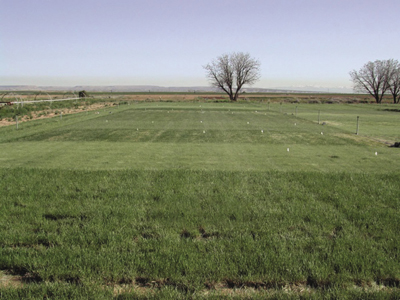
Figure 2. Cool-season grasses in April at NMSU’s Agricultural Science Center at Farmington.
Kentucky bluegrass
Kentucky bluegrass (Poa pratensis) is the most common cool-season grass grown in lawns in the US (Beard, 1973) and is common in northern NM. There are different types of Kentucky bluegrass, each with slightly different cultural requirements and suitability for various situations. Varieties grown in the ASCF studies included Adelphi, Ascot, Coventry, Goldrush, and Park in the first study (1998–2000) and Bariris and Baronie in the second study (2003–2005). The varieties in the first study were chosen because of their availability and recommendations for the local area. The two varieties in the second study were provided by a seed company for site performance evaluation. Quality rankings varied somewhat among varieties between different irrigation levels at different times of the year. Overall, Coventry and Baronie had better quality ratings than the other varieties at the highest irrigation treatment, while Adelphi maintained higher quality than other varieties at a slightly lower irrigation level. Park greened up a bit sooner than the other varieties, but its quality was rated lower due to its lighter green color.
Kentucky bluegrass spreads mainly by rhizomes that will fill in areas of turfgrass damaged by divots, traffic, drought stress, etc. In the first ASCF study, Kentucky bluegrass recuperated after three years of stand reduction caused by drought stress when it was re-irrigated at optimal levels. Several fungicide and insecticide applications were required for disease and insect control during both studies.
Fescues
There are more than 100 species of fescue (Beard, 1973), but only a few are commonly used for turfgrass purposes. Tall fescue (Festuca arundinacea), hard fescue (Festuca ovina variety SR-3100), and red fescue (Festuca rubra) were the species included in the ASCF studies. Red fescue (variety Dawson) had a fine leaf blade and exhibited good density and dark green color at the high irrigation levels during most times of the year. Red fescue is commonly mixed with Kentucky bluegrass, but it is reportedly more shade tolerant than Kentucky bluegrass. Hard and tall fescues are tough grasses that exhibited poorer quality than Kentucky bluegrass in the ASCF study. Tall fescue (variety Shenandoah) exhibited acceptable dark green color, but its quality ratings were lower than Kentucky bluegrass or red fescue because of its coarser leaf blade. It greened up in spring slightly earlier than the other cool-season grasses, but being a bunch grass, it became patchy at low irrigation levels. The hard fescue had high quality ratings in spring and fall but lower ratings in summer. While fescues have a deeper root system than Kentucky bluegrass, they can be maintained with a lower irrigation frequency. The actual quantity of water required by the fescues, however, was the same as that of Kentucky bluegrass in the irrigation studies. The fescues were not as adversely affected by disease and insects as were the Kentucky bluegrasses.
Perennial ryegrass
Perennial ryegrass (Lolium perenne) may have been one of the first grasses to be cultivated for turfgrass (Beard, 1973). It is a fine-leaf grass that exhibited very high quality (dark green color, good density and uniformity) during the first months after establishment in the ASCF studies. The quality decreased during the heat of summer, however, and the turfgrass appeared somewhat ragged after mowing. It required a higher level of irrigation than all other cool-season grasses to maintain an acceptable quality. Since perennial ryegrass reportedly does best in cool, moist regions where temperature extremes and drought do not occur, it may not be a suitable choice for arid northern NM. However, improved turf-type cultivars may perform better than the multipurpose variety (Seville) evaluated in the ASCF study.
Wheatgrasses
Most cool-season grasses used for turf, including the ones previously mentioned, have been introduced to the US from Europe or Asia. Streambank wheatgrass (Elymus lanceolatus variety Sodar) was one of the native cool-season grasses included in the ASCF study. This species and introduced crested wheatgrass (Agropyron desertorum variety Roadcrest), which was also in the study, may form a sod and are commonly used for soil stabilization in the semiarid western US. While they are suitable for use as a drought-tolerant ground cover, they were given a much lower turfgrass rating than the other grasses in the study due to their light, grayish-green leaf color and loose density (crested) or fast growth habit and poor mowing quality (streambank in particular).
Other Cool-Season Grasses
Two other native cool-season grasses included in the studies were prairie junegrass (Koeleria macrantha variety Barkoel) and alkaligrass (Puccinellia distans variety Fults). Prairie junegrass (also called crested hairgrass or turtleturf) was given high quality ratings for green color at high irrigation levels only; quality decreased significantly at lower irrigation levels. This grass was also difficult to mow, and quality decreased after mowing. Because of poor density and light color, the alkaligrass had the lowest quality rating of all cool-season grasses in the studies. Because the grass reportedly withstands soils with high alkalinity and salt content, however, it may be more suitable than the other grasses for planting in poor-quality soils
Warm-Season Grasses
In the ASCF studies, warm-season grasses were planted in late June or early July when average daily soil temperature exceeded 80°F. Optimal planting time may be earlier in spring (e.g., mid-May at average soil temperature of 70°F), but the later planting provided more time for adequate soil preparation, evaluation and maintenance of the irrigation system, pre-irrigation, and weed control prior to planting. The warm-season grasses had a much longer winter dormancy period and did not begin greening up until late April or early May (Figure 3). The average full green canopy period ranged from mid-May, when average daily temperature exceeded 60°F, to the first fall freeze in mid-October. The bermudagrasses and buffalograsses required an average total seasonal irrigation depth of between 23 and 27 inches, or about 32% less than the cool-season grasses. While the shorter irrigation season accounted for some of the water savings, warm-season turfgrass also had lower peak daily water requirements during mid-summer than cool-season turfgrass (0.19 vs. 0.23 inch, respectively). Because of higher temperature preferences, warm-season turfgrass exhibited an equal to superior quality compared to cool-season turfgrass in mid-summer (Figures 4 and 5).
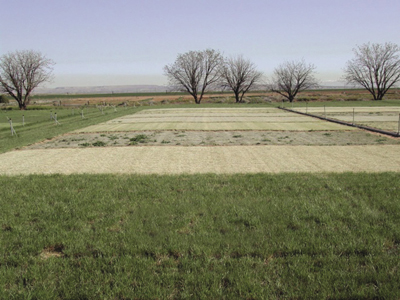
Figure 3. Warm-season grasses in April at NMSU’s Agricultural Science Center at Farmington.
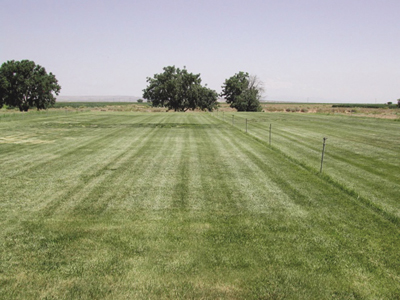
Figure 4. Cool-season grasses in July at NMSU’s Agricultural Science Center at Farmington.
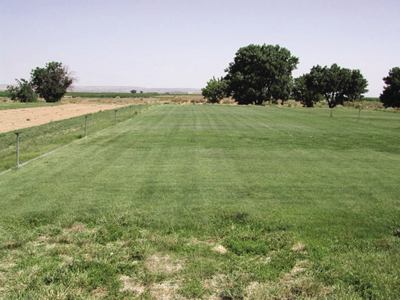
Figure 5. Warm-season grasses in July at NMSU’s Agricultural Science Center at Farmington.
Bermudagrass
Bermudagrass (Cynodon dactylon) is similar to Kentucky bluegrass in its tolerance to traffic and turfgrass recuperative capabilities after stress or damage, but it appeared to be more aggressive than Kentucky bluegrass during hot weather in mid-summer. Whereas Kentucky bluegrass spreads mainly by underground rhizomes, bermudagrass spreads primarily by aboveground runners called stolons. Five different varieties of bermudagrass were evaluated in the ASCF studies: Guymon, NM Sahara, Riviera, Wrangler, and Yukon. All varieties except NM Sahara were given mid-summer quality ratings equal to or greater than the acceptable cool-season grasses. NM Sahara exhibited high quality in the first year of establishment, but it sustained winterkill damage in subsequent years. The variety reportedly does well south of the transition zone, including southern NM where it was developed, but it is not suitable for northern NM where winter temperatures are lower. Significant winterkill was not noted in the other four varieties, which were developed in the transition zone state of Oklahoma. Riviera was given higher quality ratings than the other varieties due to finer leaf blades. It appeared to have a higher nitrogen fertilizer requirement than the other varieties, however, since it began yellowing earlier than the other varieties prior to fertilizer applications. Being a warm-season grass, the bermudagrasses required less irrigation to exhibit a quality comparable to the cool-season grasses. Bermudagrass can become a troublesome weed, especially in southern NM, so it is wise to separate this grass from garden areas with a dry, unirrigated buffer strip or other barrier.
Buffalograss
Buffalograss (Buchloe dactyloides) is a native warm-season grass that, like bermudagrass, spreads by stolons as well as seed. Six varieties (Bison, Lovington, Tatanka, Texoka, Topgun, and Legacy) were evaluated in the ASCF studies. All varieties except Legacy were planted by seed. Buffalograss is dioecious, having both male and female plants. The female flowers are low-growing and inconspicuous while male flowers protrude above the turfgrass blade. The variety Legacy, consisting of plugs (transplants) of all female plants, was developed to avoid the unsightly appearance of protruding male flowers. Compared to the five seeded varieties, which established fairly quickly and provided a solid, uniform stand, Legacy established slowly when planted at a plug spacing of nine inches. Because of light gray-green color and loose density, buffalograsses were given lower quality ratings at high irrigation levels than the acceptable cool-season grasses and bermudagrass. High irrigation also stimulated weed growth in buffalograss. At lower irrigation levels, however, seeded buffalograss exhibited more aggressive growth of stolons, so their quality was not as adversely affected by weeds or nitrogen stress compared to other grasses. So, while not rated as a high-quality turfgrass like Kentucky bluegrass or bermudagrass, buffalograss formed a suitable low-maintenance, drought-tolerant groundcover.
Blue grama
Blue grama (Bouteloua gracilis) is another native warm-season grass that was included in the ASCF studies. It is one of the most common grasses growing in the dry hills of the Four Corners region. An improved cultivar, Alma, selected because of improved seedling vigor, was the only variety evaluated. It greened up slightly earlier in the spring and went totally dormant a little later in the fall than the other warm-season grasses. It exhibited a fairly dense stand at most levels of irrigation, but the color quality was rated as low as, or lower, than buffalograss. Blue grama grew faster and required more frequent mowing than all other grasses to maintain a turfgrass height, but its quality ratings decreased significantly when mowed lower than two inches. While blue grama can be maintained as a turf, especially when mixed with buffalograss, it may be more suitable as an irrigated pasture or hay crop or drought-tolerant landscape ornamental than as a turfgrass.
Zoysia
Zoysia (Zoysia japonica) is a warm-season grass that was introduced to the US from Asia more than 100 years ago. Zoysia is one of the few warm-season turfgrasses that is shade tolerant. It is a short, sod forming grass that spreads by stolons and rhizomes. A seeded variety, Zenith, was included in the ASCF studies. The seedlings were very slow to establish, so a uniform, dense stand did not occur before weeds invaded the plot. Consequently, it was given low quality ratings. Despite the low ratings in the ASCF study, zoysia should not be ruled out as a high-quality turfgrass selection for northern NM. This is based on observations of a zoysia (variety Meyer) lawn planted with plugs in San Juan County more than 20 years ago. While establishment was slow, the zoysia formed a dense, high-quality, dark green turfgrass that eventually spread over a much larger area. Additionally, there are newer, improved hybrids that may perform well in northern NM.
Summary and Conclusions
Several turfgrass species can be grown in northern NM, but consideration of site, intended use, desired quality, water availability, maintenance level, expense, and other factors limit the choices for a given landscape. If the primary selection criteria are high quality and traffic tolerance, then a Kentucky bluegrass–fescue blend or a winter-hardy bermudagrass (e.g., Riviera, Yukon) may be the best choice. If early green-up and long green season are desired, Kentucky bluegrass would be a better choice than bermudagrass. If the landscape is shady, a fescue or zoysia would be a better selection than either Kentucky bluegrass or bermudagrass. Irrigation requirements and recovery from drought are important considerations in turfgrass selection for northern NM. This is particularly true in municipalities that have imposed outdoor watering restrictions in recent years because of a narrowing gap between water supply and demand. In these communities, and others where water availability is a future potential issue, drought-tolerant, warm-season grasses (e.g., buffalograss, bermudagrass) should be used. If a low-maintenance, low-quality ground cover is desired, the wheatgrasses, blue grama, or buffalograss appear to be suitable choices. When a species is selected, results from the National Turfgrass Evaluation Program (2015) should be consulted to select a variety of that species that has been given high ratings at a transition zone location (e.g., Oklahoma, Kansas) that has similar environmental and climatic conditions as the planting site in northern NM.
The main purpose of this guide is to provide clientele in northern NM with information that may be useful for selecting an appropriate turfgrass. This information was based on actual observations of turfgrass performance under variable levels of irrigation near Farmington, NM. For instructional information on turfgrass care, such as irrigation, fertilization, and pest and disease control, please refer to the References section.
References
Beard, J.B. 1973. Turfgrass: Science and culture. Englewood Cliffs, N.J.: Prentice-Hall, Inc.Beard, J.B., and R.L. Green. 1994. The role of turfgrasses in environmental protection and their benefits to humans. Journal of Environmental Quality, 23, 452–460.
Bigelow, C.A., J.J. Camberato, and A.J. Patton. 2013. Fertilizing established cool-season lawns: Maximizing turf health with environmentally responsible programs [Online]. Retrieved August 28, 2015, from https://www.extension.purdue.edu/extmedia/AY/AY-22-W.pdf
Duble, R.L. n.d. Turfgrass fertilization [Online]. Retrieved August 28, 2015, from http://aggie-horticulture.tamu.edu/archives/parsons/turf/publications/fertiliz.htmlFagerness, M.J., and S. Keeley. 2000. Turfgrass selection [MF-2032; online]. Retrieved January 23, 2015, from http://www.bookstore.ksre.ksu.edu/pubs/MF2032.pdf
Flynn, R. 2009. Determining amounts of fertilizer for small areas [Guide H-119; online]. Retrieved January 23, 2015, from https://pubs.nmsu.edu/_h/H119/
Goldberg, N.P. 2000. Lawn care for disease control [Guide H-507; online]. Retrieved January 23, 2015, from https://pubs.nmsu.edu/_h/H507/
Koski, T., and V. Skinner. 2012. Lawn care [Fact Sheet No. 7.202; online]. Retrieved January 23, 2015, from http://www.ext.colostate.edu/pubs/garden/07202.html
Lawn Institute. 2015. Cool & warm season grasses [Online]. Retrieved January 29, 2015, from http://www.thelawninstitute.org/pages/education/types-of-grasses-and-species-selection/cool-and-warm-season-grasses/
Leinauer, B., and D. Smeal. 2012a. Turfgrass irrigation [Circular 660; online]. Retrieved January 23, 2015, from https://pubs.nmsu.edu/_circulars/CR660/
Leinauer, B., and D. Smeal. 2012b. How to water your lawn [Guide H-504; online]. Retrieved January 23, 2015, from https://pubs.nmsu.edu/_h/H504/
Leinauer, B., and J. White. 2002. Turfgrass establishment [Guide H-509; online]. Retrieved January 23, 2015, from https://pubs.nmsu.edus/_h/H509/
National Turfgrass Evaluation Program. 2015. [Online]. Retrieved January 23, 2015, from http://www.ntep.org/
New Mexico State University Agricultural Science Center at Farmington. 1998–2005. Annual research reports [Online]. Retrieved January 23, 2015, from http://aces.nmsu.edu/aes/farm/projects--results.html
For more on this topic, see the following publications:
H-505: Mowing Your Lawn
https://pubs.nmsu.edu/_h/H505/
H-510: How to Perform a Catch Can Irrigation Audit on a Home Lawn Sprinkler System
https://pubs.nmsu.edu/_h/H510/
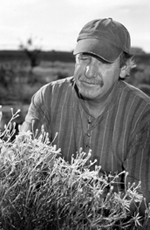
Dan Smeal has been conducting water-related research at NMSU's Agricultural Science Center at Farmington since 1983. Studies have focused on evaluating relationships between crop water use and production (or quality), and development of sprinkler and drip irrigation scheduling recommendations. Dan is a Certified Sprinkler Irrigation Designer and Landscape Irrigation Auditor.
To find more resources for your business, home, or family, visit the College of Agricultural, Consumer and Environmental Sciences on the World Wide Web at pubs.nmsu.edu
Contents of publications may be freely reproduced for educational purposes. All other rights reserved. For permission to use publications for other purposes, contact pubs@nmsu.edu or the authors listed on the publication.
New Mexico State University is an equal opportunity/affirmative action employer and educator. NMSU and the U.S. Department of Agriculture cooperating.
Revised November 2015


